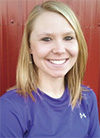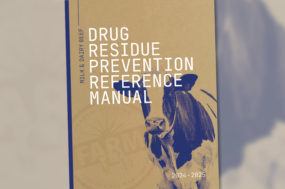I walked past the little date carved by the post on the front porch of our new milking facility and was instantly struck with a smile. It read “3-19-14” in hand-carved numbers that my husband and I etched with a worn-out pocketknife merely a year ago.
Over the past year, our farm has seen huge changes take place as the blueprints became barns and the hills of Hillside Farm gained a new outlook on life. In August of 2014, our cows moved into a new freestall facility equipped with four Lely A4’s, a closed-loop flush system and new pack barn for close-up cows. Wow, what a year. Someday I’d love to show you all the 2,387 photos I took to document the process.
But until then, a simple story will have to suffice – the story of where we are today.
As I began writing this post, I looked back at a previous entry, just after we had started up. My conclusion particularly caught my eye.
“And though I cannot say how the story will end, I can tell you that there is a red barn in the hills of southwest Virginia that is full of happy cows and farmers who are very grateful.”
Well, whether or not I’ll ever know how the story ends, I can tell you this – after only eight months, the farmers and the cows are very happy and finally learning to relax.
So many things have changed on our operation, but I’ll start by sharing just a few.
Instead of employing a milker for 10 hours a day, we now only fetch cows twice a day. This list consists of fresh cows that are past eight hours since their last visit and mid-to-late lactation cows that are past 12 hours. The number of animals is about 5 to 8 percent of the herd, and the most likely culprits are the cows close to dry.
We are hoping this number will continue to decline as more cows complete a full lactation in the barn. Fetching is usually done by a member of management in combination with other items such as breeding, treatments, routine robot maintenance and record analyzing. This process is currently taking about two and a half to three hours per time, with a maximum of six hours a day.
Some of our highest producing animals in the herd today are averaging around five milkings a day with no assistance at all. As an example, we have one cow that is milking 140 pounds at 44 days in milk and has been touched by human hands only twice in eight months – once at dry-off and again at freshening. I find that completely mind-blowing. And to top it all off, she likes humans now more than she did before!
Herd-wide we are averaging just about three milkings per day, even after dropping off the night fetch about four months ago. Milk production is around 85 pounds and seems to increase as we continue to see more cows freshen that have been in the barn already. Even cows that did not want to visit at the end of their prior lactation are now coming in full speed ahead. Sometimes a fresh cow will not even be retrieved by us after her first milking.
As far as labor, we still have two full-time employees other than the four family members as we also grow all of our crops and raise about 200 heifers. But all of us are working shorter, most likely more enjoyable days and have really had to learn to relax as far as rigidity of schedule. The cows don’t really need us to be there as much as we think they need us to be there.
We have found management, particularly data management, to be a huge factor for success in this facility. There is a tremendous amount of data provided in a very readable format, which has made this part of the job easy. But without a person actually seeing every animal, it becomes extremely important to look at the data very frequently so that no issue goes unnoticed.
In our experience, fresh cow rumination has been a huge tool in treating metabolic issues as soon as they arise. I leave the barn feeling so much better about things because I have raw data to base my decisions on instead of just my judgement. We have found it also makes it impossible to put things off when there is literally a big red flag on a cow’s number.
Feeding management has also become even more important now since that also affects visits to the robots. We had one experience where the cows literally just stopped coming in and their milk production quickly started to spiral. It was all simply because we had changed to a cutting of forage that was a little higher quality and suddenly the cows weren’t depending on the pellets as much for their energy. It was a simple fix, and now we have learned to stay ahead of the game even more than we were before.
Cow handling is tremendously different than before, mostly due to their newly relaxed demeanor. I literally spend as much time trying to scrape the crossovers because the cows won’t move as anything else I do in a day. They are not afraid of me, and I love it. While at times it can be pesky, I can do almost anything to one by myself, which seems like a big deal since 5-foot-1 girls don’t usually get that much respect from a 1,700-pound cow.
As a final thought, I would like to point out that while efficiency and increased production and happy cows are the things people will always talk about with these systems, I would be remiss if I left out how it has changed our family.
Sure, we are still working on who does what and when, and there are busy days that leave you exhausted. I think that will always come with dairy farming. But no one can ever put a price on what it feels like to sit at Christmas dinner and not have to worry about what time it is, or lingering on a sunny, spring Sunday afternoon while enjoying time with your family.
We work hard while we’re there, but this system has helped our farm let cows be cows and people be people. Sure, you will have to go to the barn sometime, but the cows are milking themselves, and maybe you’ll linger just a few minutes longer. PD
Laura Flory is a Virginia dairy farmer. Follow her blog, and connect with her on Proud to Dairy.



